Elaeis guineensis Oil Palm as a material of agronomic and economic interest of the Arecaceae family
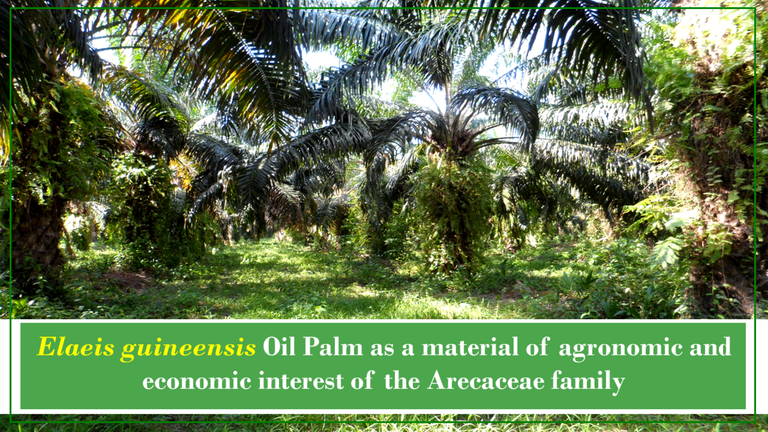
Continuing with the contributions on utilitarian botany, in this delivery I will socialize with all the academic community of the HIVE social network, content related to the oil palm Elaeis guineensis (Arecaceae), in the article you will find aspects concerning the botanical characteristics, phenological behavior, agroeconomic and nutritional potentiality of this important plant resource.
Introduction
The production of edible vegetable oil is the main agricultural activity carried out in cultivated species of oleaginous interest, characterized by generating socio-economic development in regions where large extensions of land are destined for the establishment of crops such as Sesame (Sesamum indicum), Cotton (Gossypium herbaceum), Sunflower (Helianthus annuus), Corn (Zea mays), Peanut (Arachis hypogaea), Olive (Olea europea), Oil Palm (Elaeis guineensis) and Soya (Glycine max).
With regard to the cultivation of oil palm (Elaeis guineensis), oil production in recent decades has recorded sustained growth, the result of the expansion of the cultivated area, genetic improvement, and incorporation of new standards of agricultural management, aspects that have positioned the oil of Elaeis guineensis,as the alternative plant that generates higher yields based on fat, in contrast to the values obtained in the rest of the oil plant species [1].
Consequently, and knowing the utilitarian importance of the oil palm Elaeis guineensis, the aim of this post is to socialise the botanical elements related to the phenological, agronomic, economic and nutritional behaviour exhibited by its genetic materials.
Botanical characteristics
The genus Elaeis, exhibits taxonomically only three species namely; Elaeis guineensis,commonly designated as Oil Palm or African Palm, Elaeis oleifera known as American Palm, and Elaeis odora wild resource not commercially exploited, these biological materials of the genus Elaeis originate from Africa and are classified as follows; class: Monocotiledonea, order: Palm trees and family: Arecaceae [2].
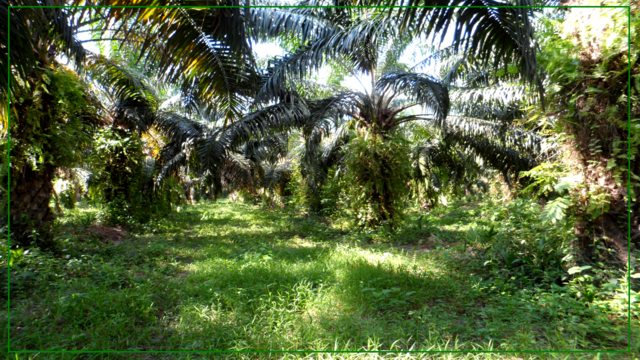
Fig. 2 Extension of cultivated area of Elaeis guineensis oil palm. Author: @lupafilotaxia.
Morphology of the Oil Palm
The oil palm Elaeis guineensis is a species of perennial biotype whose central axis is made up of a trunk (stipe), structurally formed by a set of petiole bases, with composed pinnate leaflets, leaflets with a lanceolate morphology, drupa-type fruits grouped in fruitiness that make up the bunch, and the presence of male and female inflorescences [3].
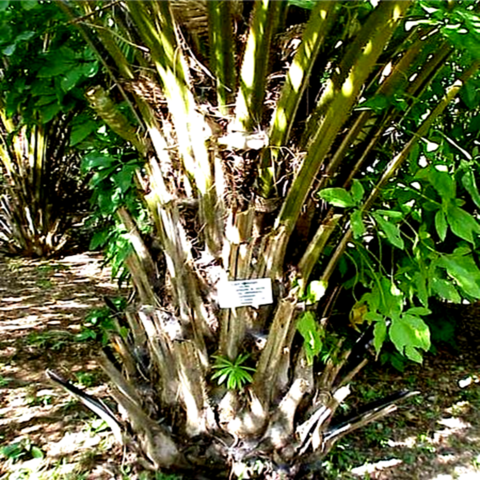
Fig. 3 Trunk central axis or Elaeis guineensis stump. Image of public domain. CC BY-SA 3.0
Agronomic aspects
Domestication of the Oil Palm
Elaeis guineensis, categorized in South America as oil palm, produces two varieties; Dura (thick endocarp and thin mesocarp) and Pisifera (no apparent endocarp and abundant mesocarp), crosses between both genetic materials produce the hybrid Tenera (thin endocarp and thick mesocarp), it is important to indicate that the bunches and fruits of the hybrid Tenera, are those used commercially for oil extraction.
With respect to the main areas used for the domestication of the oil palm, there are tropical regions, highlighting those eco-regions with soil and climatic conditions; with temperatures between 23 and 27°C, annual rainfall of over 1,800 and 2,000 mm, with a range of 5 light hours per day, soils rich in organic matter and high fertility, with a loamy texture and variable pH between 4.5 and 7.5.
Phenological behaviour
The phenological changes in Elaeis guineensis,respond essentially to soil and climatic conditions, hence, the morphological manifestations in the periods of growth, development and reproduction, are regulated by water availability, physicochemical and microbiological quality of the soil, however, against these favorable scenarios the first phenological stage after germination (0 to 45 days), gives way to the appearance and succession of leaf buds (phenological stage of vegetative growth), that are continuously constituting the erect stipe or trunk, this active growth of leaf buds is maintained until the senescence of the species, in relation to the phenological reproductive stage, is initiated at 2 years after transplantation or establishment of materials in the field, and culminates at 3 years with the formation and maturation of fruits, with reproductive cycles that can extend up to 30 years [4] .
Technical-agronomic handling
Seedling production
The success of the cultivation of Elaeis guineensis oil palm depends largely on the vigor of the seedlings, so it is advisable to establish nurseries for the production of materials of good strength, to ensure a constant water supply without watering, insect control, elimination of arvens and nutritional supply, as regards the seeds E. guineensis, should be placed in plastic bags of 45 x 55 cm with side holes, where the seedlings grow for a period not exceeding 12 months.
Planting of seedlings in the field
After the period of production of seedlings in nurseries, it is recommended from an agronomic point of view, to select only those materials, which exhibit the following morphometric characteristics; height between 1.20 and 1.30 meters, diameter not less than 20 centimeters, and availability of 8 photosynthetically active leaf blades, elements that serve as indicators of vigor for the definitive sowing in the field, and at the same time serve as a guide for the discard of abnormal seedlings or those with no agricultural value, On the other hand, as far as the sowing is concerned, the hole where the materials will be placed must have the following dimensions 50 x 60 cm, this with the purpose of filling the remaining space with organic matter that can activate the metabolic processes in the recently sowed specimens.
Topographical design of the plantation
The topographical design of the plantation, or method of sowing in the field generally used in the cultivation of Elaeis guineensis oil palm, is that of planting in a triangle, a system that guarantees orientation for the capture of light, availability of spaces to be able to carry out agricultural maintenance work, and optimum density of 143 seedlings/hectare.
Control of arvenous species
One of the particularities of the cultivation of Elaeis guineensis oil palm is its capacity to generate shade, a product of the leafy and phyllotoxic architecture that the leaf blades have, so that the arven species that compete for space, water and light with this crop, are mainly specimens of herbaceous biotype, hence, as control methods are established specimens of covers as the fodder peanut Arachis pintoi (Fabaceae), whose habit of creeping growth, presents agronomic utility for its bio-herbicide effect.
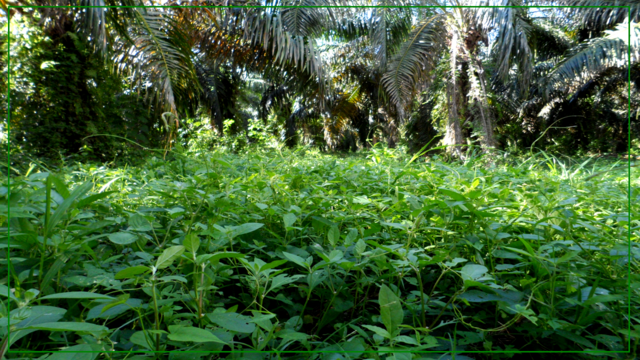
Fig. 4 Growth of arvenous species of herbaceous biotype, in the cultivation of Elaeis guineensis oil palm. Author: @lupafilotaxia.
Phytosanitary control
As a result of the tropical soil and climate conditions, where the oil palm Elaeis guineensis is extensively cultivated, the appearance of fungal and bacterial diseases represent important limitations to growth, development and reproduction, and therefore, attacks from fires; Armillaria mellea, Cercospora elaidis, Phythium splendens, Fusarium oxiporum, Marasmius palmivorus and the bacterium Erwinia carotovora, jointly cause necrotic burns, depigmentation and foliage folding, besides bud and fruit rotting, variables that affect the productivity of the crop and demand the implementation of control measures, among these; cleaning or elimination of infected tissues, control of pathogen-carrying arvenous species, integrated soil management (nutritional balance), application of systemic fungicides and bactericides.
Fertilization and productivity
The structural robustness of the Elaeis guineensis specimens is used as an indicator of nutritional demand. In this physiological scenario, controlled fertilization programs are used in order to increase the productivity of the plantations; nitrogen, phosphorus, potassium, magnesium, calcium and boron, which must be added either by synthetic or organic chemicals in proportions or doses that correct the deficiencies reflected in soil analysis, i.e. when there is a decrease in the critical reference level of each nutritional element for the cultivation of oil palm.
Agro-economic potential
Agronomic performance
According to data reported by the Food and Agriculture Organization of the United Nations - FAO, the yield per hectare of the oil palm Elaeis guineensis, is above 3.7 million tons, oil/hectare/year.

Fig. 5 Palm Fruit accepts Elaeis guineensis. Image of public domain. Author: Cayambe / CC BY-SA 3.0.
| Indonesia | |
| Malasia | |
| Tailandia | |
| Colombia | |
| Nigeria |
Nutritional potential
The oil of Elaeis guineensis has been incorporated among the oils of greater demand and acceptance in international markets, this due to its nutritional quality, and the yield per hectare that holds the cultivation of oil palm E. guineensis, as a tropical oil species.
| Energy | ||
| Total fat (g) | ||
| Iron (mg) | ||
| Vitamin C (mg) | ||
| Vitamin E (mg) |
Oil Palm Production in Venezuela
Dynamics of local production
Venezuela's tropical soil and climate conditions have favoured the establishment of approximately 50,000 hectares of Elaeis guineensis oil palm, with the southern sub-region of Lake Maracaibo accounting for 55% of the cultivated area, followed by the state of Monagas with 35% and Yaracuy 10%, areas that were planted with the support of the national agricultural policy promoted in the 1980s, with the aim of covering the country's deficit in vegetable fats [7].
SCIENTIFIC CONTRIBUTIONS OF THIS PUBLICATION
- The manuscript on Elaeis guineensis, the main species of agronomic and economic interest in the family Arecaceae, contributes to the dissemination of scientific and technical elements, such as botanical characteristics of the genus Elaeis morphology, domestication and phenological behaviour of the oil palm, elements related to technical-agronomic management practices, agro-economic and nutritional potential, outlining the reference values of the quality of oil from the mesocarp of the fruits of E. guineensi. Like the previous manuscripts, the content implicit in the post increases the botanical resources for the socialization of this important oleaginous vegetable resource.
BIBLIOGRAPHICAL REFERENCES CONSULTED AND CITED:
[1] Ramírez N., Silva A., Garzón E., y Yáñez E. Caracterización y manejo de subproductos del beneficio del fruto de palma de aceite. Centro de Investigación en Palma de Aceite – Cenipalma. Bogotá – Colombia. 2011. Article: Online access
[2] Rocha P., Melendez, E., y Rey, L. Ampliación del análisis de diversidad genética de Palma de aceite proveniente de Angola. 2007; 12:20-28. Article: Online access
[3] Purba A., Noyer J., Baudouin L., Perrier X., Hamon S., and Lagoda P. A new aspect of genetic diversity of Indonesian oil palm (Elaeis guineensis Jacq.) revealed by isoenzyme and AFLP markers and its consequences for breeding. Theor Appl Genet. 2000;101;5-6:956-961. Article: Online access
[4] López J. Caracterización fisiológica y morfológica de Palmas de aceite Taisha (Elaeis oleíferaElaeis oleífera HBK Cortés x Elaeis guineensis Jacq.) en la región Amazónica del Ecuador. Universidad Nacional de Colombia Facultad de Ciencias Agrarias. 2014;80. Article: Online access
[5] González A. La agroindustria de la palma de aceite en América. Palmas. 2016; 37; 2: 215-228. Article: Online access
[6] Funiber. Fundación Universitaria Iberoamericana. Composición nutricional. Base de Datos Internacional de Composición de Alimentos. 2019. Article: Online access
[7] Acupalma. Asociación Venezolana de Cultivadores de Palma Aceitera. 2010.
ATTENTION
Readers and followers
If you wish to read more scientific articles in English or Spanish, of excellent academic quality, do not hesitate to visit #STEMSocial and #STEM-espanol, communities that promote scientific content mainly in the areas of Science, Technology, Engineering and Mathematics.
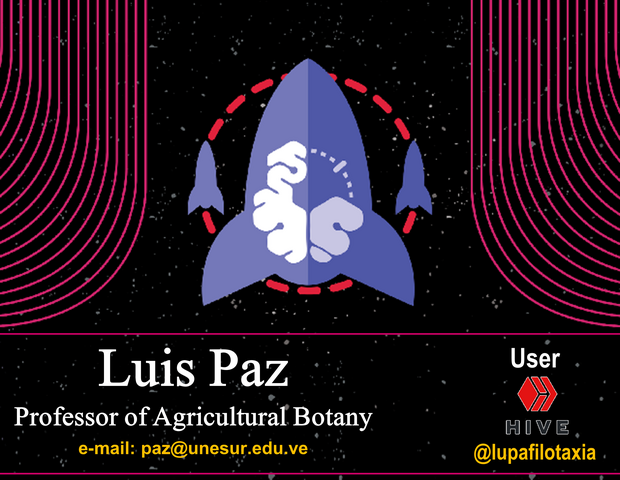
0
0
0.000
#posh Twitter:
https://twitter.com/lupafilotaxia/status/1263015898807447553
Nigeria use to be the highest producer of oil palm in the world before the discovery of crude oil in the 70s. Malaysia imported the seeds from here and look at where they are today when Nigerian can't even be found in the top 5. I'm ashamed for my country in this regard.
Knowing how sturdy the stony endocardp of the seed, how are they planted? Is it naturally or something is administered to break the stony stuff?
Greetings friend @gentleshaid, the situation in Venezuela is similar to that of Nigeria, here we were producers of Acaitera Palm, however, production has collapsed in the last 3 decades mainly due to disinterest and little government action. In relation to the seed and germination, in our case we received commercial material from Costa Rica, and to be able to deal with the difficulty of germination due to the lignification of the endocardium, the germination process is usually induced, applying a natural drying process until 20% humidity is achieved, then they are submitted to thermal treatment for a period of 6 weeks at 40°C, later they are taken to plastic chambers with controlled humidity at 80%.
It seems developing countries have several things in common, including lackadaisical attitude and corruption of government. It is educating to know that the seeds are pretreated before being nursed. That confirmed my earlier suspicions.
Greetings @rbalzan79, thank you for your positive comments, we continue to socialize useful material that can be used in the agricultural activity.
Thanks for your contribution to the STEMsocial community. Feel free to join us on discord to get to know the rest of us!
Please consider supporting our funding proposal, approving our witness (@stem.witness) or delegating to the @steemstem account (for some ROI).
Thanks for using the STEMsocial app and including @stemsocial as a beneficiary, which give you stronger support.